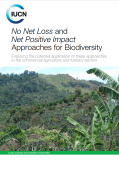Renewable energy financing in emerging economies faces particularly daunting challenges, but there are creative policy solutions that could potentially reduce the cost of renewable energy support by as much as 30%.
In this policy brief, authors look at two potential solutions:
- Reduce the cost of using debt sourced from the developed world: Index renewable energy tariffs to foreign currency, in so doing eliminate the currency hedging costs that are responsible for the largest share of the difference between developed world and rapidly emerging country debt costs.
- Improve the cost-effectiveness of domestic renewable energy support programs: Provide lower-cost debt through debt concession programs, which our research shows could lower the total cost of providing required support.
Many developing countries are looking to grow their renewable energy portfolios to meet environmental, economic, business, and energy security goals, particularly as the costs for these technologies are declining rapidly.

The study finds that there is ample scope for enhanced protection of natural resources and growth of agricultural production in Brazil within a Production and Protection framework. From a protection standpoint, the country would benefit from developing mechanisms that significantly drive up the private cost of clearing native vegetation, as well as through the advancement of market-based incentives that promote sustainable practices. From a production standpoint, there is room to increase Brazilian agricultural production via productivity gains, at no apparent cost to environmental conservation.


China’s central bank, the People’s Bank of China, has launched a ground-breaking report that sets out in specific and practical terms an ambitious agenda of how China can green its rapidly developing financial and capital markets.
The report, entitled “Establishing China’s Green Financial System”, is the outcome of a Green Finance Task Force which was tasked to develop policy, regulatory and market-innovations that would better align China’s financial system with the needs of green industry and sustainable development. The Task Force was co-convened by the Research Bureau of the People’s Bank of China (PBC) and the United Nations Environment Programme project Inquiry into the Design of a Sustainable Financial System (`UNEP Inquiry`).
